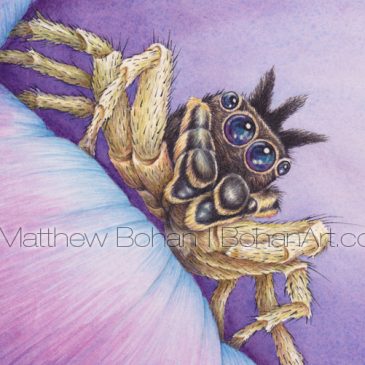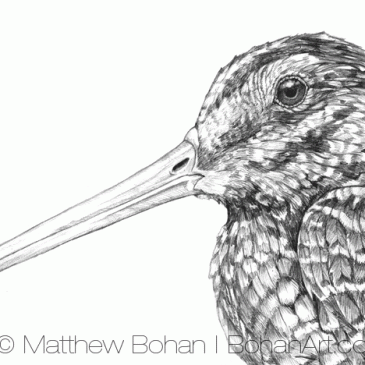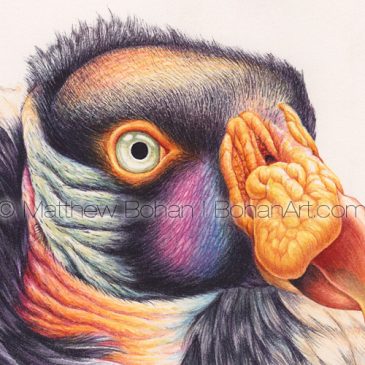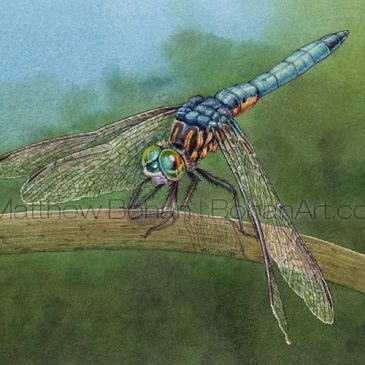Male Dimorphic Jumping Spider (Dark Phase) Transparent Watercolor & Time Lapse Video
“My name is Matt, and I like Jumping Spiders.” Typically when people see my photos, sketches or paintings of jumping spiders, I hear the same things: “Yuck!” “The only place I want to see that is on the bottom of my … Continued
Tree Swallow Pencil Sketch p72
Work really picked up for a while, so I fell behind with posting paintings and sketches. I have a back-log of sketches to scan and write up. This is a Tree Swallow from Ottawa NWR in northern Ohio. I can really … Continued
Female Black-throated Blue Warbler Transparent Watercolor & Time Lapse Video
Back to the drafting table! This is a small 7 x 10-inch transparent watercolor of a female Black-throated Blue Warbler. I’ve painted a male before; those bright colors were asking for it. The females, while drab in comparison, are still … Continued
Wilson’s Snipe Pencil Sketch p71
It’s been a while since I last posted. I guess that’s good and bad. It’s good because that means I’ve been busy with illustration and animation work. It’s bad because I’ve had less time to paint. In addition to work, the warm … Continued
Ruby-throated Hummingbird Hat (sheet craft foam, hot glue, acrylic paint)
A friend recently asked, “So, what did you do at work this week?” And I replied, “Uh, this is going to sound weird. I made a hat shaped like a hummingbird.” I’ve made a bunch of these hats for our kids … Continued
Raising Art from the Ashes… Trumpets
Having spent more than 22 years as a professional illustrator, I’ve worked on a considerable number of projects using a wide variety of styles. Stylistically I gravitate towards a particular look, rendering pieces with an abundance of detail, saturated colors and plenty of contrast. I’ve been called … Continued
King Vulture 7×10-inch Transparent Watercolor Painting and Time-lapse Video
I finally got around to painting a King Vulture. (!) I’ve been fascinated by these birds for a long time, and this one presented a great challenge for watercolor. Its textures are tremendously varied: glassy eyes, shiny beaks, fluffy feathers, bristly hair-like feathers, wrinkly … Continued
Mourning Dove 7×10-inch Transparent Watercolor Painting and Time-lapse Video
I often paint things in the “wrong” season. I have to admit it’s a bit odd to be painting an icy cold winter scene of a Mourning Dove when it’s over 90º F outside. Maybe it’s better? It’s certainly easier to be … Continued
Mourning Dove Pencil Sketch p71
For some reason it took me a long time to get around to sketching a Mourning Dove. I really love these birds. You seem to find them everywhere, and everyone seems familiar with their plaintive “coo” call. When I was a … Continued
Blue Dasher Dragonfly (5×7-inch Transparent Watercolor): Throwback Thursday
Summer is a great time for dragonflies, damselflies and painting! In my opinion insects really lend themselves well to the small 5×7-inch format. A few years ago I had a lot of fun painting several Odes, the nickname for Odonata, which is the … Continued










